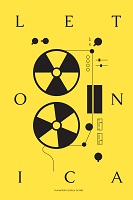Defining Contemporary Theater: Global Experiences and Latvian Practices
Defining Contemporary Theater: Global Experiences and Latvian Practices
Author(s): Zane Kreicberga, Edīte Tišheizere, Līga UlberteSubject(s): Theatre, Dance, Performing Arts, Culture and social structure , Sociology of Culture, Sociology of the arts, business, education, Sociology of Art, History of Art
Published by: Latvijas Universitātes Literatūras, folkloras un mākslas institūts
Keywords: postdramatic theater; performance; text; dramaturgy; actor; performer; space;
Summary/Abstract: The Western culture introduces several traditional variations for the discourse on the paradigm shift in theater that was rooted in processes of the 1960s through the 1970s. The most popular theories, which have also gained support in the theoretical thought of Latvian theater, are the concepts of postdramatic theater by German theater researcher Hans-Thies Lehmann (Lehmann 2006), the performative turn, proposed by Erika Fischer-Lichte (Fischer-Lichte 2008), and the studies of French theater theorist Patrice Pavis (Pavis 1993, Pavis 2013, Pavis 2016). Latvia as a post-Soviet territory, where theater had been a strictly institutionalized and controlled area, experienced significant changes starting from the country regaining its independence in the 1990s. Nowadays, Latvian theater cannot be analyzed in isolation from international processes — both because their presence in Latvia is influential and affects the practice of local theater-makers, and because obvious similarities and parallels can be seen in the development of theater models and the approach to the creative process. Latvian contemporary theater widely uses interdisciplinary artistic practices, amplifies the research and documentary components of theater, applies a collective creation approach, breaks the boundaries of professions and hierarchies, refuses the domination of dramaturgical text (as is characteristic of postdramatic theater), evolves aspects of performativity in actors’ work, and changes the role of the audience. Therefore, processes and phenomena in Latvian theater should be analyzed with reference to current theories of theater and performance. However, given the strong lingering dominance of institutionalized repertory theaters and the vast tradition of dramatic theater, Latvian theater can be described using Hans-Thies Lehmann’s observation that drama “lives on as a structure — however weakened and exhausted — of the ‘normal’ theatre: as an expectation of large parts of its audience, as a foundation for many of its means of representation, as a quasi automatically working norm of its drama-turgy” (Lehmann 2006: 25). Theater theory in Latvia has sought to accommodate postmodernist concepts to new theater phenomena in the 1990s (Radzobe 2004) and to approbate Lehmann’s theory of postdramatic theater (Zeltiņa 2008 and Radzobe 2015) for analyzing twenty-first-century Latvian theater phenomena. The latest collective study on Latvian theater, Latvian Theatre Since Restoration of Independence. Phenomena and Personalities at the Turn of the Century and in the 21st Century (Tišheizere et al. 2020), fortifies this approach. However, there is a general lack of specific studies in Latvia which could contextualize processes of Latvian performing arts in relation to current theories in the field and solidify a clear and consolidated terminology. It must be noted that the issue is further exacerbated also by the fact that there are very few translations of theater theory texts, and there is no unanimous understanding regarding the use of key terms even among teachers of theater. Several research projects have been started recently, which should result both in translations of theater theory texts and a Latvian dictionary of performing arts terminology. The purpose of this article is to identify prevailing discourses, in which Latvian theater research has historically included three classical elements of theater — the text, the actor, and the space — to highlight issues of theater terminology in relation to the changing practice of performing arts, and to outline perspectives for further research. Contemporary Russian theater theorist Anton Sergeev believes that historicity is one of the key issues in consolidating theater terminology and creating absolute meanings for specific terms. In his collection of articles titled Introduction to Theater Theory, published in 2011 at the Russian State Institute of Performing Arts, he proposed four groups to classify all theater terms: 1) ‘direct’ theater terms — actor, stage, role, etc. Even though they have varying functionality in different theater models, they stem directly from the practice of theater, even though theorists may assign them with some figurative meaning; 2) terms that have been forged as part of specific theater systems or models, e.g., Konstantin Stanislavski’s super-objective, or the alienation in Bertolt Brecht’s epic theater; 3) terms derived from other aesthetic or philosophical systems not directly related to theater, e.g., structure, deconstruction, text; 4) specific terminology of theater theory, which has been either purposefully created by theater theorists or has gained a specific meaning and context within the process of describing theater. E.g., direction theater, psychological theater, performance reconstruction, etc. (Sergeev 2011: 175–178).
Journal: Letonica
- Issue Year: 2022
- Issue No: 46
- Page Range: 80-101
- Page Count: 22
- Language: English

